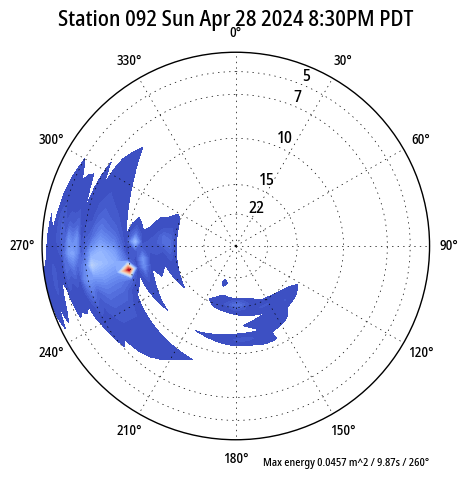San Pedro Buoy
 Help
HelpThis is basic information about the waves recorded by the buoy over the last half hour.
Height is the open-ocean height of the primary swell.
Peak period is the wave length in seconds of the primary swell. A longer period indicates stronger, more lined up waves.
Direction is where the primary swell is coming from in degrees. Sea temperature is the temperature of the water at the buoy.
Why is the height different than the height in the chart below?
Significant wave height is calculated by averaging the highest 1/3 of all waves. The wave band height is the highest third for specific wave periods. The heights for a specific wave period are generally more consistent than across all wave periods.
This leads to two conclusions, that the wave band height will be higher than the significant wave height, and it will be more accurate when measuring an incoming swell.
 Help
HelpLong, gradual swells are on the left, short steep chop is on the right.
Tap or hover over a bar to see the exact height and direction of the wave period band.
The shape of the graph's component swells tells you about the sea state:
A single peak on the left half of the graph indicates a clean, strong swell. These longer period waves are more powerful and translate to higher surf.
Broad or multiple peaks, usually on the right side of the graph, are generated nearby and may indicate bumpier, more confused seas.
The last bar on the right measures short-period wind waves and chop (6-2 second periods). Wave heights in open water may reach the height indicated, but surf heights for wave periods this short are much lower and are usually not surfable.

